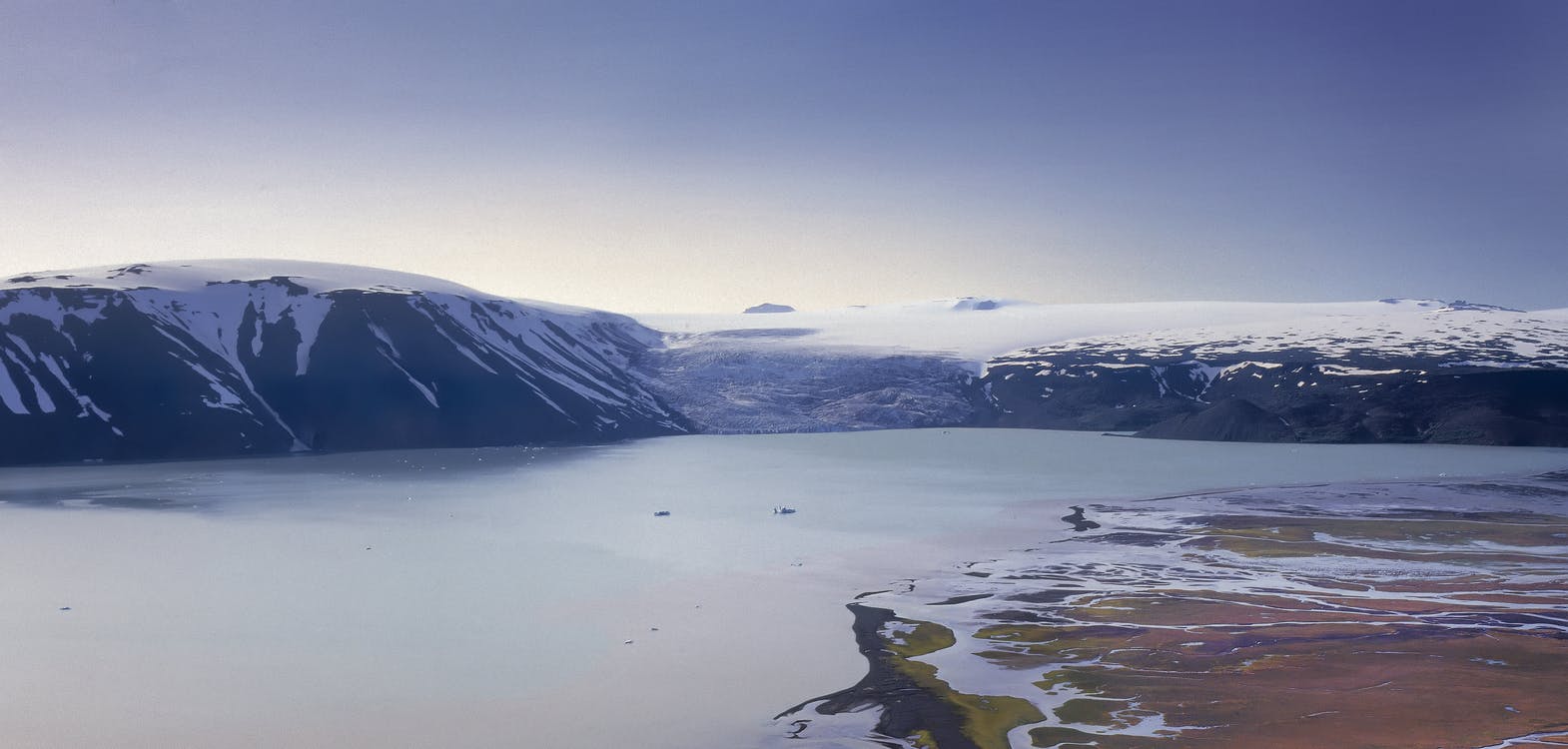
Guide to Langjökull
Glaciers like Langjökull are essential to Iceland's beauty, energy source and climate indicators. Glaciers also act as natural freshwater reservoirs; as they melt, they contribute to rivers and water sources, supporting Iceland's ecosystems and agriculture.
How Large is Langjökull?
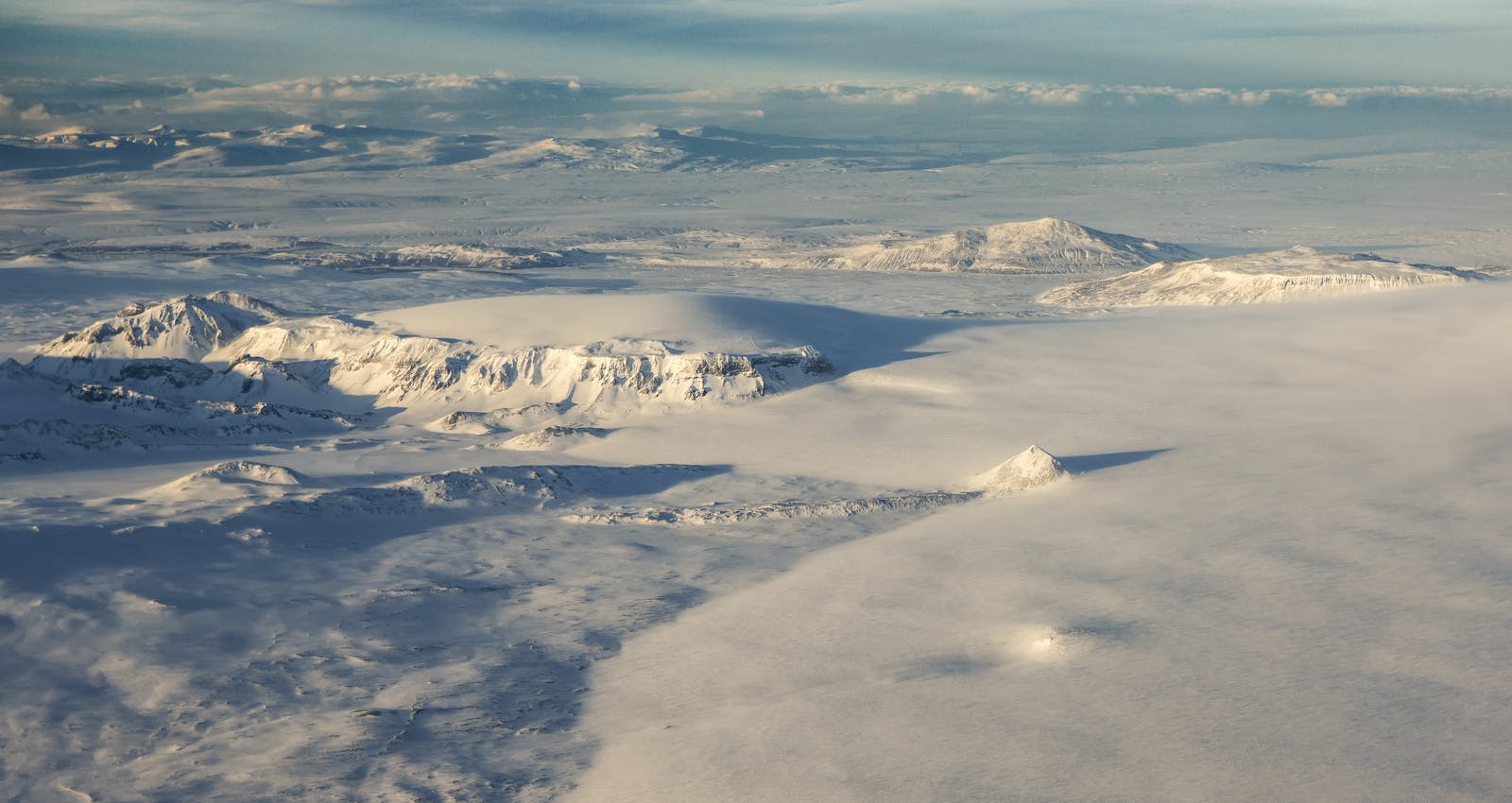
Langjökull is the second-largest glacier in Iceland, covering an area of about 832 square kilometres (2021) and reaching a maximum height of around 1,430 metres.
What Does Langjökull Translate to in English?
Langjökull means "Long Glacier" in English, which is entirely appropriate given its massive elongated shape. "Langjökull" is pronounced as "lang-yer-kutl".
Where is Langjökull Located?
Located in the highlands of Iceland, Langjökull is a prominent natural feature within the country's beautiful landscape. It's easily accessible from Reykjavik, making it a popular destination for tourists looking to explore Iceland's icy wilderness. The glacier offers various activities like snowmobiling and ice cave tours, allowing visitors to experience the stunning beauty of this frozen landscape up close.
Has Langjökull Been Impacted by Climate Change?
As with many glaciers around the world, Langjökull has been affected by climate change, with glaciers experiencing visible retreats and ice loss over the years. This has raised concerns about the future of Iceland's glaciers and their environmental impact, leading to increased attention to conservation efforts and the study of these massive natural wonders. In fact, Langjökull is more sensitive for elevating temperature than the other large glaciers of Iceland.
Do Tours Visit Langjökull?
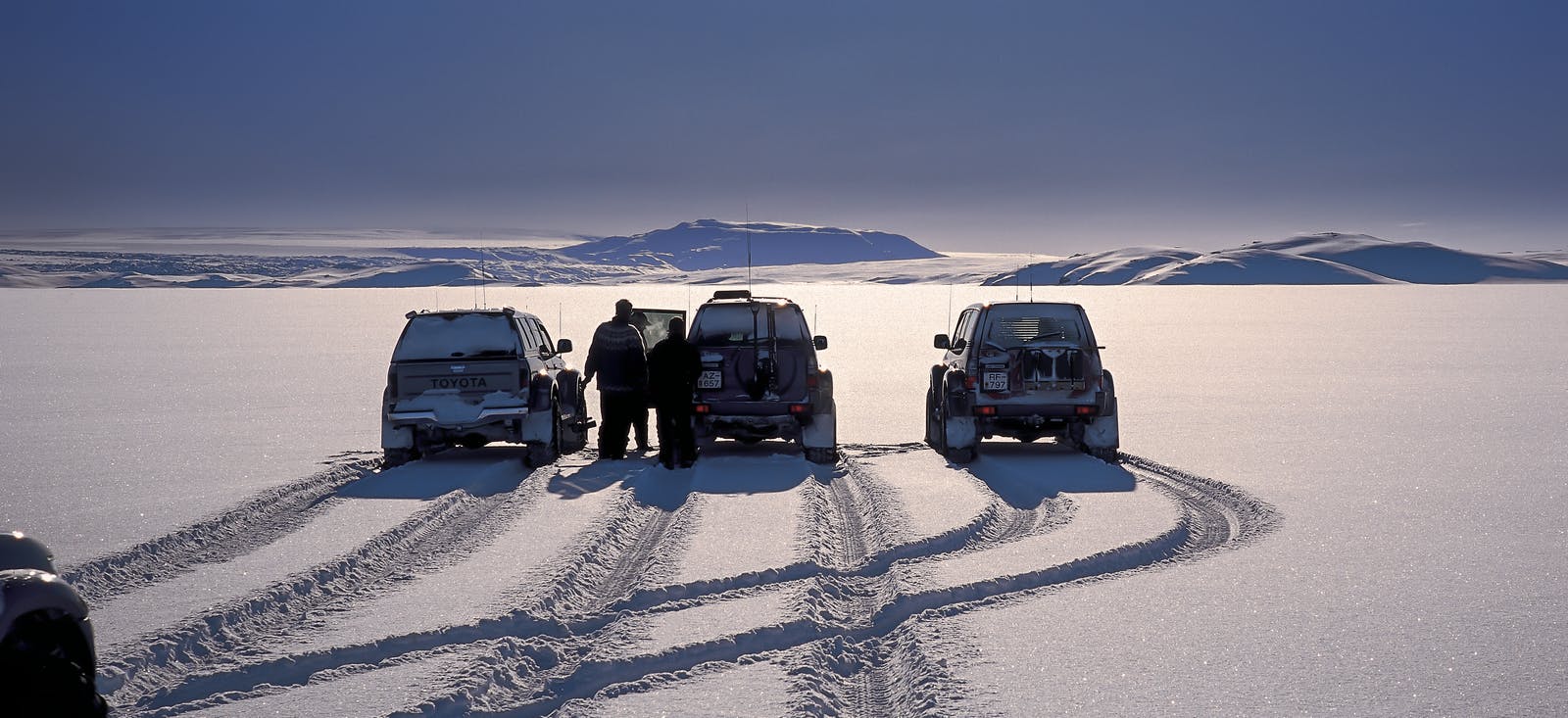
Guided tours to Langjökull, including snowmobile tours, ice cave excursions, Super Jeep tours, and glacier hikes, are very popular in Iceland. Tours typically depart from Reykjavik, with various tour operators offering packages that are tailored to different preferences. For instance, you can sign up for an adrenaline-filled adventure of ice climbing or more leisurely excursions like a Super Jeep tour or a visit to the manmade ice tunnel, Into the Glacier.
What you can Expect from an Into the Glacier Tour on Langjökull
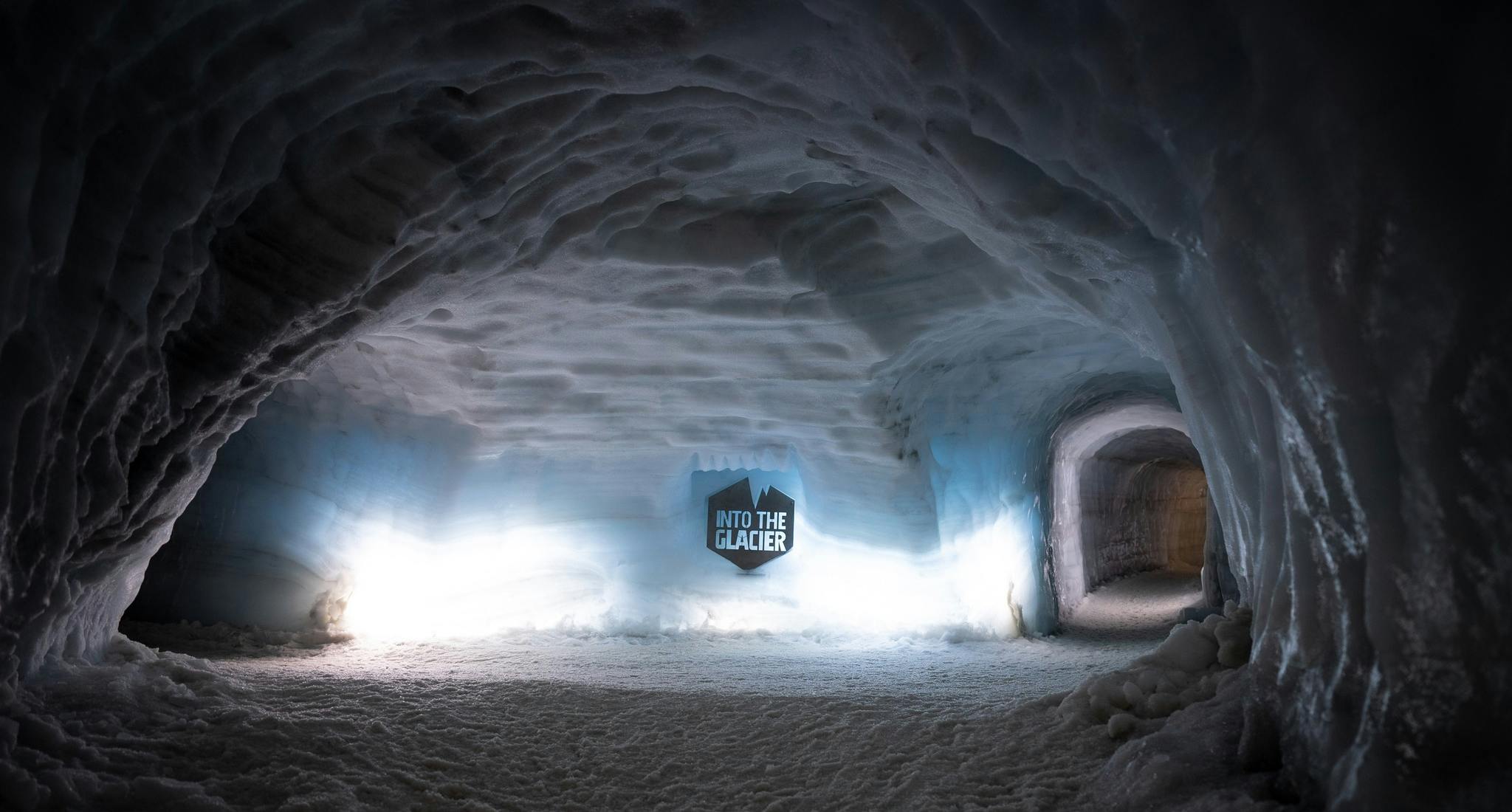
After being picked up in Reykjavík or meeting in the West Iceland village of Húsafell, you will board a 20-ton customised monster truck designed to traverse the glacier's soft, sloping snow and rocky ice.
On clear days, the climb on the vast, icy desert to the ice cave is magnificent. During the five-kilometre climb from the base camp, a guide explains the impact of climate change on Iceland's glaciers and the region's geology. The truck climbs the glacier until you reach the tunnel opening. Visitors strap crampons onto their shoes to navigate the slippery and slushy floor.
Once you reach the tunnel, which is accessible by tour year-round, guests are treated to incredible views and the opportunity to run their fingers along smooth ice walls. The illuminated walls are lined with LED lighting, and information about glaciers is posted throughout the tunnel. Tours to Into the Glacier are often paired with snowmobiling rides, making it a great way to connect with some of the actual ice in Iceland.
What it's like Inside the Ice Cave
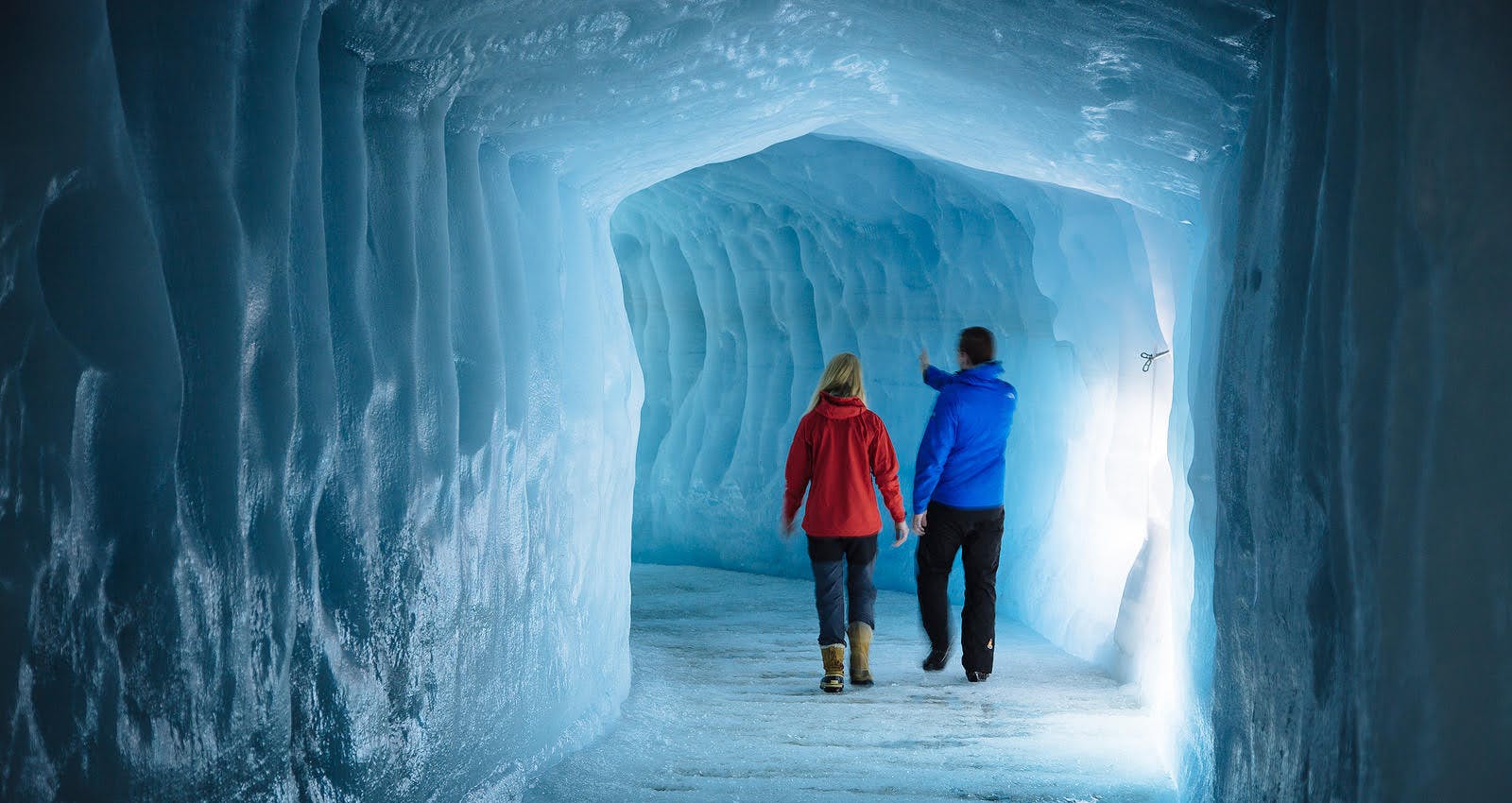
The Into the Glacier ice cave consists of tunnels and caves stretching 500 meters into solid glacial ice and is an awe-inspiring feat that must be maintained. Once inside an ice cave, you can see the different colours of the ice and run your fingers along the shapes and crevices. The light from outside can expose deep blue crystal hues, and it's incredible! This will truly become one of your favourite memories of Iceland!
Safety Precautions to Keep in Mind
Visiting ice caves on guided tours is a safe activity. The only way to see ice caves is through a guided tour, as searching for them on your own is extremely dangerous. On tour, you are equipped with the right gear and given a safety briefing before heading out with your trained glacier guide.
Where Can I Learn About Glaciers in Reykjavík?

Perlan's Wonders of Iceland exhibition features an ice cave that is 100 metres long and made from more than 350 tonnes of snow from Icelandic mountains. Ice caves are a natural phenomenon that takes shape in the deep winter months within glaciers. Meltwater streams carve these fantastic caves, and at Perlan, guests can see a real ice cave in a safe and secure environment. A visit to an ice cave is a magical experience that no one who comes to Iceland should miss, and Perlan offers year-round travellers a chance to get a sense of this unique natural phenomenon.
In addition to their natural beauty, Iceland's glaciers are significant for the environment as they are an essential source of fresh water for the island and play a vital role in regulating its climate.
At Perlan, guests can explore Iceland's' natural wonders through a series of exhibits and immersive presentations, including ice caves and glaciers, as well as northern lights and volcanoes.
FAQ

Is it safe to visit glaciers in Iceland?
Glaciers are perfectly safe from a distance, but travellers should never attempt to walk on a glacier without a trained glacier guide. Some snow-covered cracks and crevices can pose great danger to those unfamiliar with the surroundings. Guided tours are advisable to experience a glacier in Iceland fully.
What is the best time of the year to visit Into the Glacier in Iceland?
Tours to Into the Glacier are available year-round. Please note that Into the Glacier tours are popular activities and are best booked in advance. Also, prepare to be flexible, as tours sometimes get cancelled due to the weather and road conditions.
Can beginners participate in activities on Langjökull?
Absolutely! Activities like snowmobiling and ice cave tours on Langjökull are designed to accommodate beginners. Tour operators provide instructions and safety briefings, making these activities accessible even to those without prior experience.
How are the ice caves in Langjökull formed, and do they change over time?
The ice caves in Langjökull are formed through a combination of glacial movement and the melting of ice, often influenced by geothermal activity. The caves can change shape, size, and location over time due to the dynamic nature of the glacier. Seasonal temperature variations and geothermal heat sources contribute to this ongoing transformation, making each visit to the ice caves a unique experience.







